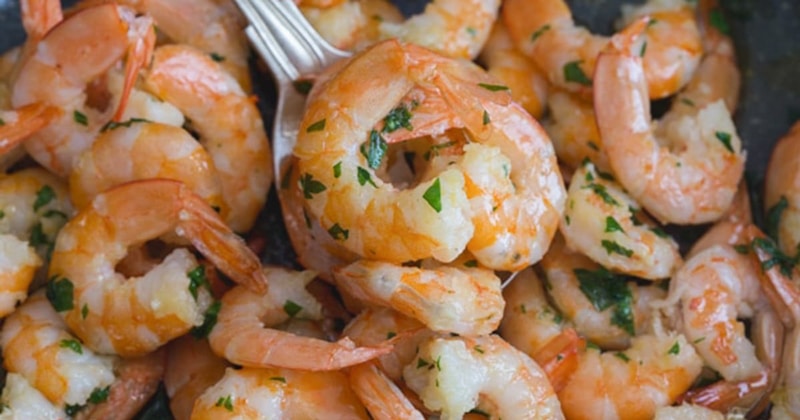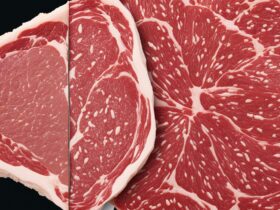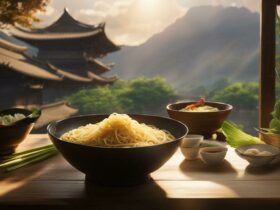Shrimp is a beloved seafood that has captured the hearts and taste buds of people around the world. With its delicate flavor and versatile nature, shrimp has become a staple ingredient in various cuisines. From appetizers to main dishes, shrimp offers a range of culinary possibilities. In this article, we will delve into the world of shrimp, exploring its different types, health benefits, buying and storing tips, popular recipes, cooking techniques, its presence in different cuisines, and the importance of sustainable fishing practices.
Types of Shrimp
Shrimp come in various types, each with its own unique characteristics and culinary applications. Let’s take a closer look at some of the most popular types of shrimp:
Whiteleg Shrimp
Whiteleg shrimp, also known as Pacific white shrimp, is one of the most commonly consumed shrimp species worldwide. It is characterized by its firm texture, mild flavor, and slightly sweet taste. Whiteleg shrimp is versatile and can be used in a wide range of dishes, including stir-fries, pasta dishes, and shrimp cocktails.
Tiger Shrimp
Tiger shrimp are named after their distinctive striped shell patterns. They are known for their large size and succulent meat. Tiger shrimp have a slightly stronger flavor compared to other shrimp varieties, which makes them perfect for grilling or barbecuing.
Pink Shrimp
Pink shrimp, also known as Gulf shrimp, are prized for their delicate texture and sweet flavor. They are typically smaller in size compared to other shrimp species. Pink shrimp are often used in seafood stews, pasta dishes, and shrimp salads.
Brown Shrimp
Brown shrimp have a rich, earthy flavor and a firmer texture. They are commonly found in the Atlantic and Gulf of Mexico. Brown shrimp are popular in Southern cuisine and are used in dishes such as gumbo, jambalaya, and shrimp boils.
Health Benefits of Shrimp
In addition to its delicious taste, shrimp also offers several health benefits. Here are some reasons to include shrimp in your diet:
- Shrimp is rich in nutrients such as iodine, selenium, vitamin B12, and zinc.
- It is low in calories and can be a good option for weight management.
- Shrimp is an excellent source of omega-3 fatty acids, which are important for heart health.
- It provides a high-quality source of protein, which is essential for muscle growth and repair.
- Shrimp contains important vitamins and minerals like vitamin D, phosphorus, and magnesium.
How to Buy Shrimp
When purchasing shrimp, there are a few factors to consider. Freshness and quality are key. Here are some tips to help you make the best choice:
- Fresh shrimp should have a mild ocean scent and a firm texture.
- If buying frozen shrimp, ensure they are properly sealed and have no signs of freezer burn.
- Consider the size and appearance of the shrimp, as different recipes may call for specific sizes.
How to Store Shrimp
Proper storage is important to maintain the quality and freshness of shrimp. Here are some guidelines for storing shrimp:
- Fresh shrimp should be refrigerated and consumed within a day or two.
- If you need to store fresh shrimp for longer, you can freeze them in airtight containers or freezer bags.
- When handling shrimp, always practice good hygiene and avoid cross-contamination with other foods.
Popular Shrimp Recipes
Shrimp can be prepared in numerous delicious ways. Here are some popular shrimp recipes to try:
Grilled Shrimp Skewers
Marinated shrimp threaded onto skewers and grilled to perfection. This recipe is perfect for summer gatherings and pairs well with a refreshing citrus dipping sauce.
Shrimp Scampi
A classic Italian dish featuring shrimp sautéed in garlic, butter, and white wine. Serve over pasta or with crusty bread for a delightful meal.
Shrimp Alfredo Pasta
Creamy and indulgent, shrimp alfredo pasta is a crowd-pleasing favorite. The combination of tender shrimp, rich alfredo sauce, and pasta creates a comforting and satisfying dish.
Shrimp Fried Rice
A quick and easy stir-fried dish that combines shrimp, rice, vegetables, and flavorful seasonings. Customize with your favorite vegetables and enjoy a delicious one-pan meal.
Coconut Shrimp
Crispy, golden shrimp coated in a sweet and crunchy coconut crust. This tropical delight is often served as an appetizer or as part of a seafood platter.
Cooking Tips and Techniques
To achieve the best results when cooking shrimp, consider the following tips:
- Before cooking, remove the shells and devein the shrimp if necessary.
- Shrimp cook quickly, so avoid overcooking to prevent them from becoming tough and rubbery.
- Experiment with different seasonings and marinades to enhance the flavor of your shrimp dishes.
Shrimp in Different Cuisines
Shrimp is a popular ingredient in various cuisines around the world. Here are some examples of how shrimp is used in different culinary traditions:
- Asian Cuisine: Shrimp plays a central role in dishes like shrimp stir-fries, shrimp dumplings, and shrimp tempura.
- Mediterranean Cuisine: Shrimp is often featured in Mediterranean seafood paella, shrimp scampi, and grilled shrimp kabobs.
- Cajun and Creole Cuisine: Shrimp is a key ingredient in traditional dishes like gumbo, étouffée, and jambalaya.
- Latin American Cuisine: Shrimp ceviche, shrimp tacos, and shrimp empanadas are just a few examples of shrimp-based dishes in Latin American cuisine.
Sustainable Shrimp Fishing
It’s important to consider the sustainability of shrimp fishing to protect our oceans and ensure the longevity of this valuable seafood resource. Here are some key points to keep in mind:
- Look for labels and certifications such as the Marine Stewardship Council (MSC) or Aquaculture Stewardship Council (ASC) to support sustainably sourced shrimp.
- Avoid shrimp products associated with destructive fishing practices or those sourced from areas with poor environmental regulations.
- Choose shrimp that are caught or farmed using methods that minimize bycatch and habitat damage.
Conclusion
Shrimp is a versatile and delicious seafood option that can elevate any meal. Whether you prefer grilled shrimp skewers, shrimp scampi, or shrimp fried rice, there are countless ways to enjoy the unique flavor and texture of shrimp. Remember to choose sustainably sourced shrimp and experiment with different recipes to discover your favorite preparations. So, dive into the world of shrimp and unleash your culinary creativity!
FAQs
1. How can I tell if shrimp is fresh? Fresh shrimp should have a mild ocean scent and a firm texture. Avoid shrimp that smells strongly fishy or has a slimy texture.
2. Can I cook frozen shrimp without thawing? Yes, you can cook frozen shrimp without thawing them. Just adjust the cooking time accordingly, as frozen shrimp may take slightly longer to cook.
3. Can I eat the shrimp tail? While the shrimp tail is edible, it’s often removed before consuming for convenience. However, some dishes, like tempura, may leave the tail intact for presentation purposes.
4. How many calories are in shrimp? The calorie content of shrimp can vary depending on the size and preparation method. On average, there are about 84 calories in 3 ounces (85 grams) of cooked shrimp.
5. Can I substitute shrimp in recipes that call for other seafood? Shrimp can be a versatile substitute for other seafood like scallops or crab in many recipes. However, keep in mind that the flavor and texture may differ slightly.








